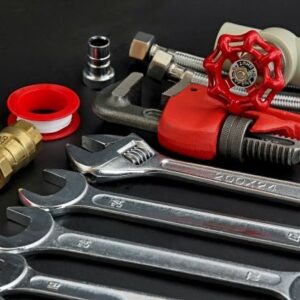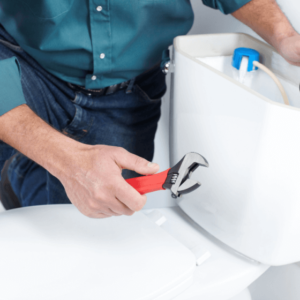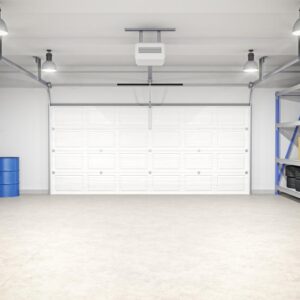Freshening up your home’s exterior is a big, but rewarding, job. If your home’s walls are stucco or brick, or if you’re painting landscaping walls or other rough-textured features, the job can be a bit more challenging than painting smooth surfaces. As long as you prepare properly and have the materials and equipment you need for the job, it won’t be a daunting task.
Paint on exterior surfaces can be weakened by the sun’s ultraviolet radiation and the constant exposure to weather and moisture. Over time, pigments and binders in paint degrade and the surface chalks, erodes and loses color. Temperature changes cause paint to expand and contract and make it peel and flake. Moisture from the inside can collect under the paint and cause it to lose adhesion and flake off. As can efflorescence – salt deposits that form due to excess moisture that escapes from the inside through the exterior masonry walls. The result of these effects can keep your home from looking its best, particularly if the walls are stucco.
Step 1: Choose the Right Paint for the Job
When painting exterior surfaces, it is recommended that you use latex paints, which have higher durability on exterior surfaces than oil-based paints. Latex paint provides better fade resistance, flexibility, chalk resistance and adhesion. When you’re painting stucco, brick or concrete, first prime the surface with True Value EasyCare Ultra Premium Exterior Primer/Sealer, then paint with True Value EasyCare Ultra Premium Exterior Masonry/Stucco Paint.
Step 2: Buy the Right Amount of Paint
Once you’ve selected your paint colors, you’ll need to know how much paint to buy. When estimating, a good rule of thumb is to multiply the length of each surface by its height and add another 30 percent for good measure. Typically, one gallon of paint will cover 400 square feet. Buy more than you think you need; you can always use the extra for touch-ups.
Step 3: Prepare for Painting
Remove all screens, light fixtures, plumbing outlets, electrical covers, shutters and address numbers/placards or cover them with painter’s tape before you begin. Use drop cloths to cover cars, patio furniture, shrubs and anything else you don’t want to splatter with paint. It’s a good idea to cover the ground so you don’t get paint on walkways and on the grass. Also, be considerate of your neighbor’s property while painting.
Safety Alert!
When using a ladder to reach high areas, invest in an adjustable ladder stabilizer that attaches to the ladder and braces onto the roof.
Remove dirt, mildew, and chalky and loose paint by pressure washing with water and a mild detergent. Using a pressure washer is the most effective method of cleaning because of its ability to blow dirt and debris out of the tiny crevices and pores in stucco, brick and concrete. Let everything dry completely before moving on. Apply a masonry surface conditioner if surfaces are chalky or crumbly after cleaning stucco walls.
Look for any substantial cracks in the surface. Small, hairline cracks can be painted over, but anything larger needs to be repaired before painting. Use a paintable acrylic latex caulk rated for outdoor use to fill cracks. Let the caulk set and dry before painting.
Step 4: Prime and Paint
Paint rollers make excellent exterior priming and painting tools, especially on walls made of stucco and brick, which can be difficult to cover completely. While on smooth walls almost any roller cover can work a textured surface, like stucco, brick, or concrete, calls for a roller cover with a nap that’s at least 1”. Buy heavy duty, 5-wire roller frames and extension poles that are metal, for maximum strength. Plastic frames and poles can bend or break from the extra force you will apply to get paint into all crevices and pores. For brushwork, use professional-grade paint brushes with wood handles and synthetic bristles. These provide the best results when using latex paint. Purchase different sizes of brushes for the job. Choose a small (1″) angled brush for small, tight crevices; a medium-size, angled brush (2″) for cutting in; and a large-size brush (3″+) for general painting.
Helpful Tip
When using a paintbrush, don’t use excess paint to get into pores and crevices. Wiggle the brush up and down and back and forth to push the paint in.
Spray applicators can also be effective for large areas of rough surface but sometimes don’t cover the surface as completely as a roller. You also have to be careful and watch your surroundings to avoid spillage and accidental spray on adjacent surfaces. Read all instructions and be sure you know how to effectively and safely use the sprayer.
Safety Alert!
When using a sprayer, wear safety glasses, gloves and a dust mask or respirator to protect your eyes, skin and lungs from paint mist.
Before painting, apply True Value EasyCare Ultra Premium Exterior Primer/Sealer. This seals porous surface material so the topcoat won’t soak in and dry unevenly. It also helps prevent peeling, rusting and bleed-through (especially on concrete). Pour primer into a sprayer or a paint tray and coat your roller. Follow the top-down rule — work from the top to the bottom to get the most even coverage. Use brushes for cutting in and getting into areas that are hard to reach with a roller. Let the primer dry completely before starting to paint.
When you’re ready to paint, pour True Value EasyCare Ultra Premium Exterior Masonry/Stucco paint into a sprayer or into a paint tray and coat your roller. Again, follow the top-down rule. Use brushes where you can’t use a roller. When you’re done, go over the paint surface with a roller to balance coverage. Use two coats for optimal results.
Helpful Tips
Use ladder mitts to prevent paint from scraping off. Another useful product is a pot hook, which allows you to hang the paint bucket from your ladder for easy access.
Avoid ridges and lap marks on a flat surface by always stroking into the wet paint, never away from it. As you finish painting one area and move on to the next, blend each new stroke of the brush toward the wet paint previously applied so the layers blend evenly.
Step 5: Clean Up
Thoroughly rinse your roller covers and brushes in water until it runs clear and squeeze them out to remove excess liquid. Store them in plastic bags. If you used a sprayer, follow cleanup directions as directed by the manufacturer. Pick up drop cloths and pull off any painter’s tape at a 45-degree angle to avoid removing any paint.
Congratulations! Now you’re ready to paint stucco and other rough surfaces.
Project Shopping List
Here’s what you’ll need to complete this project successfully.
- EasyCare Ultra Premium Exterior Primer/Sealer
- EasyCare Ultra Premium Exterior Masonry/Stucco Paint
- Drop cloths
- Painter’s tape
- Ladder
- Adjustable ladder stabilizer
- Pressure washer
- Mild detergent
- Masonry surface conditioner
- Acrylic latex caulk
- 5-wire roller applicator frame
- Roller covers with 1″ nap
- Extension pole
- Paintbrushes (small, medium and large)
- Spray applicator (optional)
- Safety glasses
- Gloves
- Dust mask
- Respirator
- Paint tray
- Ladder mitts
- Pot hook












